Editor’s Note: This post is written by a member of LTV’s sponsored content team, The Leisure Explorers. Do you own a Leisure Travel Van and enjoy writing? Learn more about joining the team.
As we neared the end of the trail the immense wall of petroglyphs came into view. I noticed an older gentleman engaged in active conversation with a group of visitors. Like ourselves, they were curious about the history and geology, which resulted in the creation and preservation of this site. I realized the gentleman was a volunteer at this historic place. He was passionate and extremely knowledgeable and it was obvious how happy it made him to share his information.
We were unaware we would have the opportunity to participate in a historical presentation and felt lucky we had decided to visit when we did. As a small group began to form, we were treated to facts and explanations that brought the historic sight alive. He recounted his recent visit to a Native American reservation, where he engaged himself in learning from distant relatives of the people who had created the petroglyphs we were viewing.
His excitement resonated throughout the group, spurring many questions and conversations. After spending much longer than we had originally planned, we walked away with more than knowledge; we walked away with a deeper appreciation of this site and of the dedication of the many volunteers who make these parks special.
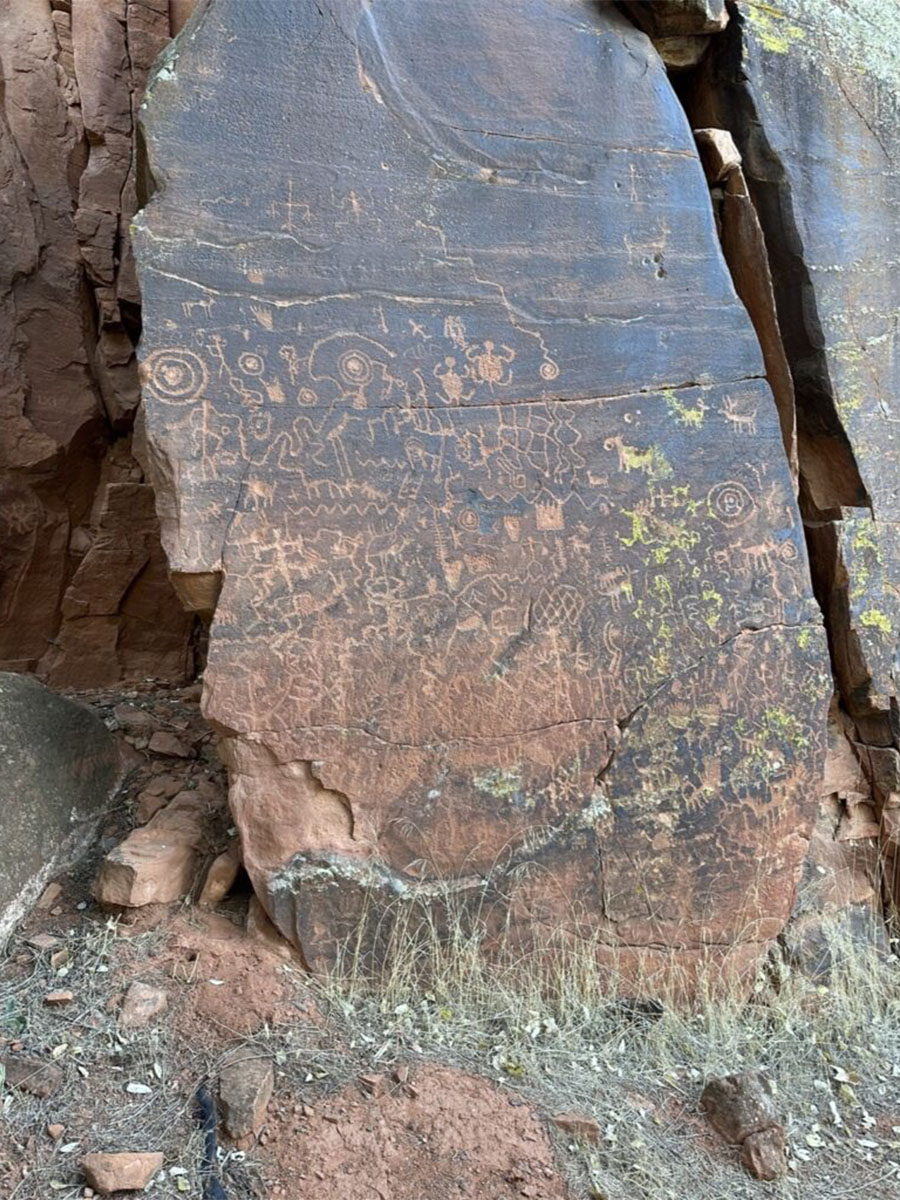
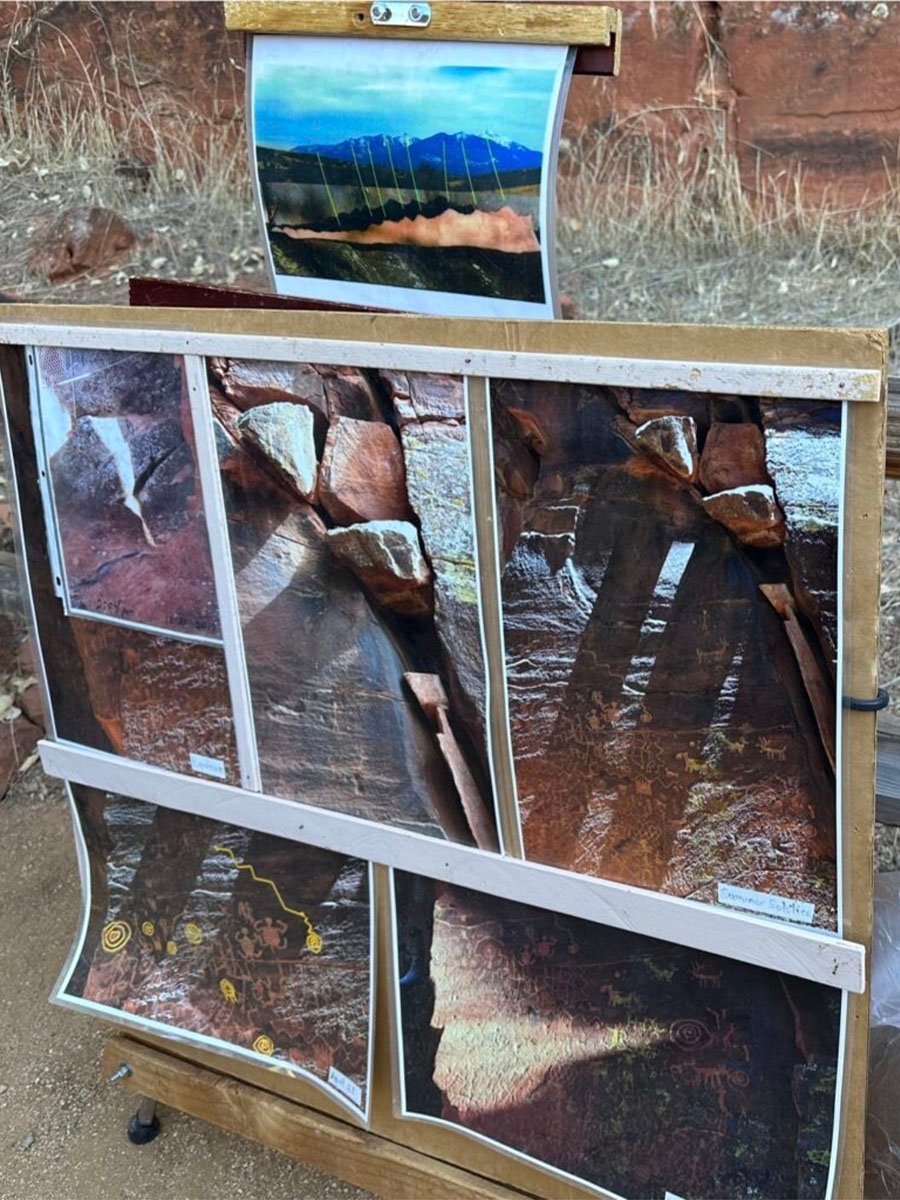
Volunteers are Everywhere
Fortunately, this experience has not been unique. We have had the pleasure of meeting many volunteers who donate more than their time. They give both their enthusiasm and knowledge to many visitors. We have enjoyed geology walks in Red Rocks State Park in Arizona, astronomy presentations in Arizona and New Mexico, and guest ranger talks in many National Parks.
In most situations, these people are volunteering their time and services, often using their own equipment, such as telescopes or cameras. Sometimes, as in the case of the gentleman at the petroglyph site he receives an on-site RV spot in exchange for his time and knowledge. While in others, the volunteers simply live in an adjacent community to the park, receiving no compensation.
Educational Walks
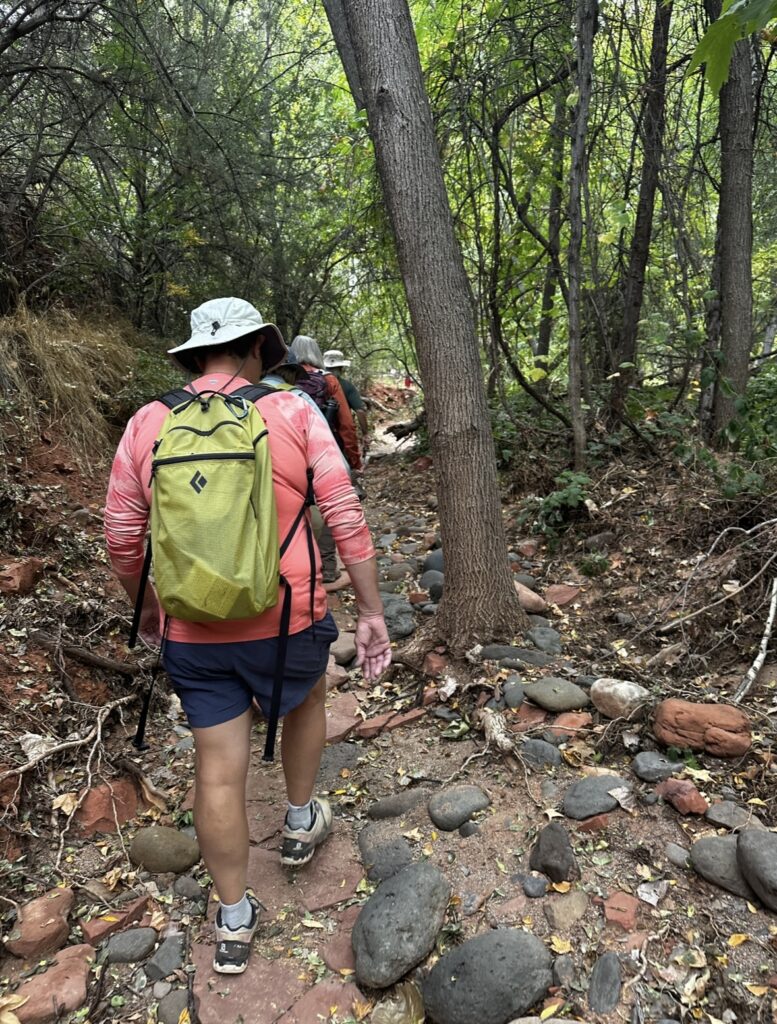
On this particular day, we enjoyed a geology hike at Red Rock State Park in Arizona. The gentleman leading the walk was a retired professor who loved sharing his knowledge. He also led an ethnobotany hike focusing on native plants and how they intertwined with indigenous society and wildlife.
At the beginning of our full-time RV journey, I had no idea how many people are volunteers in State and National Parks. As we traveled more, I began to realize that many of the people we were interacting with in visitor centers were volunteers, some donating time for services and some just donating time. Before we became full-timers, I assumed park hosts and the people working in parks were park employees.
Ranger Programs
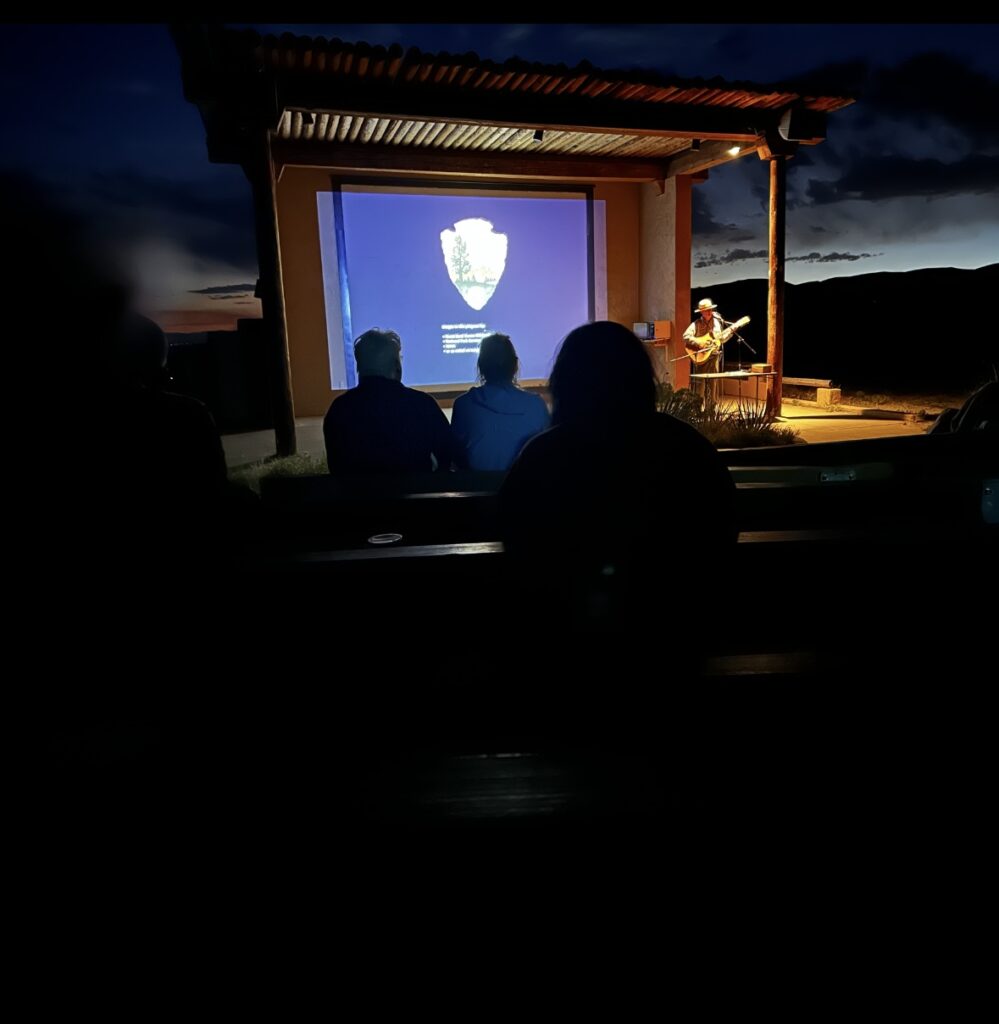
This experience at Great Sand Dunes was part concert, comedy show, and completely entertaining. We were expecting to see a laser-guided constellation presentation, and this was so much more. The person in the photo was a Ranger but I felt it was important to include. Not only are volunteers enhancing visitors’ experiences, but many Rangers are wearing many hats and working after hours to inform and educate campers.
Historical Guides and Helpers
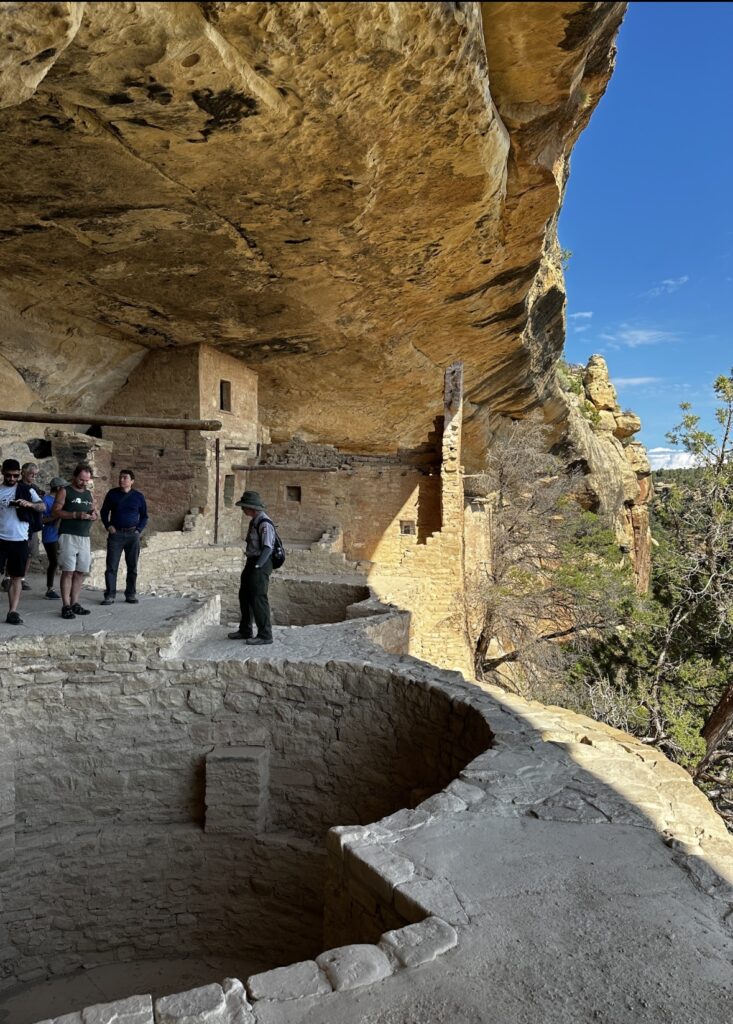
One of the many highlights of our journey was a multi-day trip to Mesa Verde National Park. We met volunteers who led walks through the cliff dwellings and assisted rangers in organizing visitors. The above photo was taken on a tour through Balcony House, and the below photo was taken in Cliff House.

Park Visitor Centers
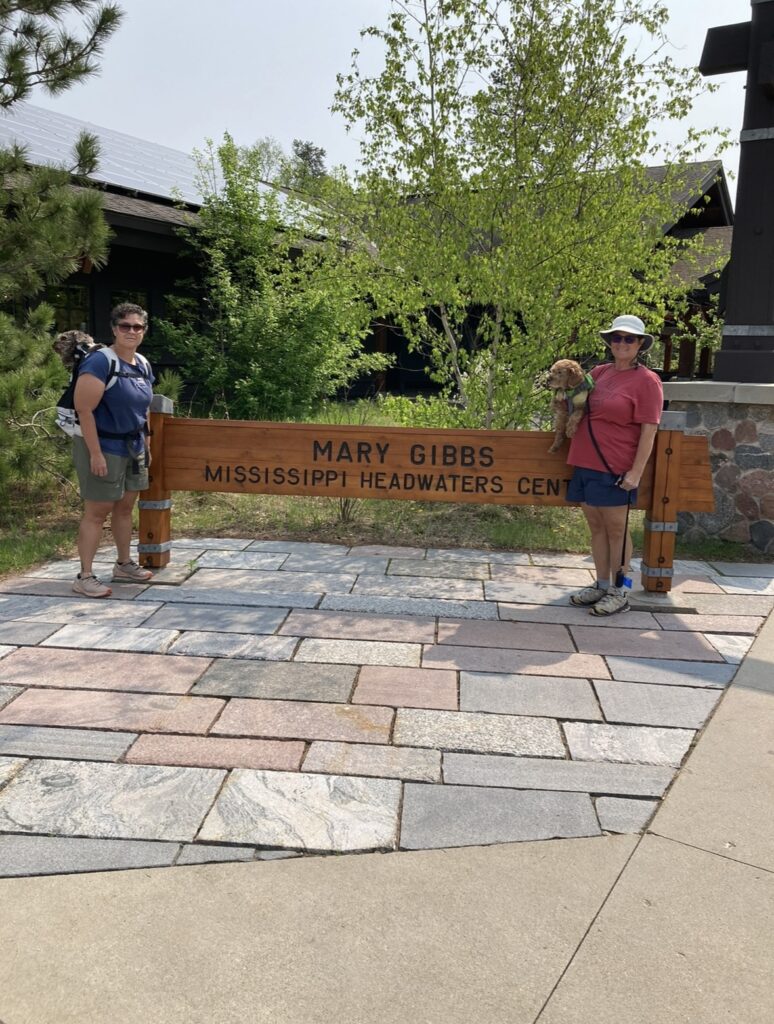
These are just a few of the visitor centers we enjoyed in our travels last year. The visitor center is our first stop when we arrive at a State, National park, or National Monument. We almost always encounter a volunteer providing park and local information. They are upbeat, friendly, and assist in any way they can.
Occasionally, we see them assisting a difficult person with the same smile and friendly approach they have with everyone else. For us, full-time RVing and visiting these beautiful places has reinforced our “Live Simple, Live Happy” motto, which is not unlike Lake Havasu’s “No Bad Days.” Keeping these simple ideas in mind can help turn even the most difficult situations into positive experiences.
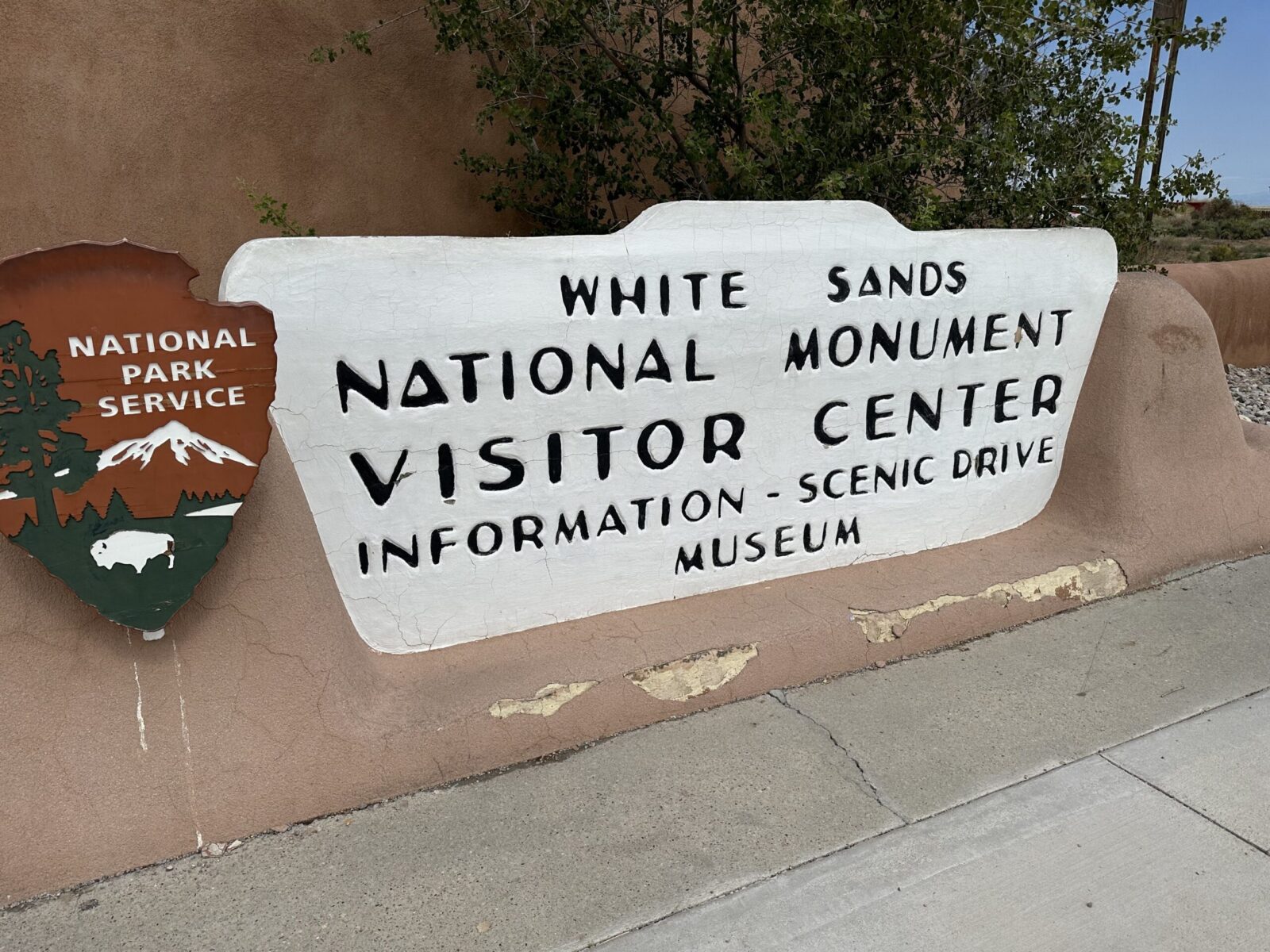

Workampers
Workampers is a term used to describe many types of working RVers. Many think of work campers as transient workers moving from place to place, working in various positions. While this is an accurate description in its most basic form, it does not adequately describe the population of people included in today’s workamper workforce.
Workampers is a general term used for various people who work in Commercial, State, and National Parks. This piece aims to help demystify the differences and clarify the process and opportunities. My experience is limited to our communication with other volunteers and firsthand experience.
Jess and I are currently volunteering at a State Park. Officially, we are camp hosts. Our arrangement with the park is twenty-four hours of work in exchange for our full hook-up campsite. We are doing this for the experience, not the free campsite; we are fortunate to have other revenue sources, and dedicating some of our time feels right. Because both of us are volunteers, we work the same two days together.
Each ranger is responsible for how they choose to run their parks and may have different expectations. The same is true for the jobs you will be expected to perform. Our park has a visitor center, which means that in our case, one of us works inside, and the other works outside. Rangers in our park clean all the restrooms daily and manage the campground on our days off. Their plate is packed with many responsibilities, which additionally include administrative duties, equipment and facility maintenance, and community educational opportunities.
A Day Volunteering in the Visitors Center
The inside work of the visitors’ center consists of many small tasks encompassing three different categories. Customer service, selling merchandise, and light cleaning. We work on Saturdays and Sundays and help over a hundred people daily. Our priority is assisting campers by providing any information they request, which is interesting because we are new to this area and the park.
The park rangers and previous volunteers have compiled information on geology, plants, animals, and local history for us to read and share. The amount of information was a bit overwhelming at first. Our combined experiences relate to business and management; additionally, Jess is an RN. None of this experience has anything to do with the details about this area or particular park. However, the passion and skills we acquired building our businesses perfectly adapted us to this volunteer assignment.
Day One
On day one, we both immediately felt comfortable and excited. We spent a few hours with the current volunteer, who would soon be leaving. They showed us the park’s processes, including explaining the various passes we would be selling. In addition, merchandise is provided by a non-profit group whose proceeds benefit the park. We received a brief overview of the particular office equipment and where supplies are kept.
We print copies of literature, fold them properly, and keep the brochure area full. Maps and literature are constantly offered to campers, and we are continually restocking. We clean the glass entrance doors and glass display cases throughout the day, dusting objects and displays as we have time between helping campers. Our park is set up with a wonderful recorded presentation describing how the park was created, because it is not on a loop, we are constantly starting it for campers to enjoy.
There is plenty to do and our 9-4 shift flies by!
Day Two Outside Job Duties
On day two, Jess was able to staff the office on her own while I learned the outside responsibilities. I started my day by raising the flags and preparing the local weather report for the campers. I was provided a Gator with a trailer and all the tools to tidy up the campsites.

The first responsibility is removing campsite tags and placing the new reservations. The ranger has them ready for us when we arrive. Our park has reserved and first-come, first-serve sites, requiring a different management type. Reserved sites are completely managed by Reserve America, and we cannot access the system. However, the first-come, first-serve sites are our responsibility. We ensure they are properly reserved and occupied, following the rules and regulations of the state park.
As I place new tags, I inspect any empty sites. I look for trash and return the campsite to its natural state. Our park uses standard aluminum trash cans, which must be emptied daily. Campfire pits are cleaned out, and sites are raked. Depending on size and additional tasks, Each site typically takes 10-20 minutes to complete.

The work is not glamorous but definitely satisfying. As full-time RVers ourselves, I love pulling into a clean, freshly raked campsite free of cigarette butts and signs of others before us. Providing this feeling to others is a personal goal. After a full day of tidying up, I feel my age! The work has been a wonderful addition to our active lifestyle. I am starving on work days and sleep well.

Everyday is an Adventure
Many couples who work in campgrounds do the same jobs each day. Jess and I are equally adept at either and enjoy both, so we switch it up. We enjoyed ourselves and had as much fun as we did running our restaurant together. Weekends are busy and challenging, and we love the game. In the restaurant business, the game is trying to pull off the perfect service, where every customer is happy and enjoys their experience, which is quite a challenge given everyone has their preferences.
In the restaurant business, campers come in like waves, all at the same time with different needs and questions. We have become great at triaging campers, quickly helping those with easy questions and then serving the more complex, all while occasionally fielding a phone call. Enjoying a fast-paced environment and having the ability to multitask is helpful in this position.
We are approached with various questions in both the campground and visitors center. One of the best parts of this experience has been the interactions with fellow campers. I can best describe it as waking up in a beautiful location every day, walking a few steps to our job, and spending the day helping others like ourselves, sharing stories, and learning from one another. Jess and I have always loved working together, and this has been no different. We have the flexibility and skills to assist each other if one of us is especially busy, and the experience to support each other if we have a difficult issue.
Our Site
Our site is one of four this park uses for park volunteers. It is a full-service site with electricity, water, and sewer. Additionally, I love that the New Mexico State Parks provide picnic tables, fire pits, and, in some situations, picnic shelters with concrete pads. The four volunteer sites are side by side, which would be wonderful for getting to know fellow RV volunteers.

The sites are located close to trails and the visitors’ center. Our Starlink works wonderfully in the park, however there are no over-the-air stations available. The closest local news using an app on our satellite is from Los Angeles, California. T-Mobile is our cell carrier, we have newer iPhones, and receive 5G service throughout most of the park. Many campers have mentioned they have poor cell phone coverage.

City of Rocks State Park is a dark sky park. The stars put on a show at night. The park offers a sky party one night a month when the sky is the darkest. This program is provided to campers and visitors and is led by local astronomers living there. They have vast knowledge and provide event-goers the opportunity to see distant galaxies, our own Milky Way, and constellations.
LTVs Everywhere

LTVs are made for this park! The majority of sites are primitive and intermingled amongst the rocks. We have seen and met many fellow LTVers, some on their way or returning from the 2024 solar eclipse. It has been wonderful having the opportunity to meet so many people we have “met” on Facebook in person. In this photo, we were able to capture three of us!
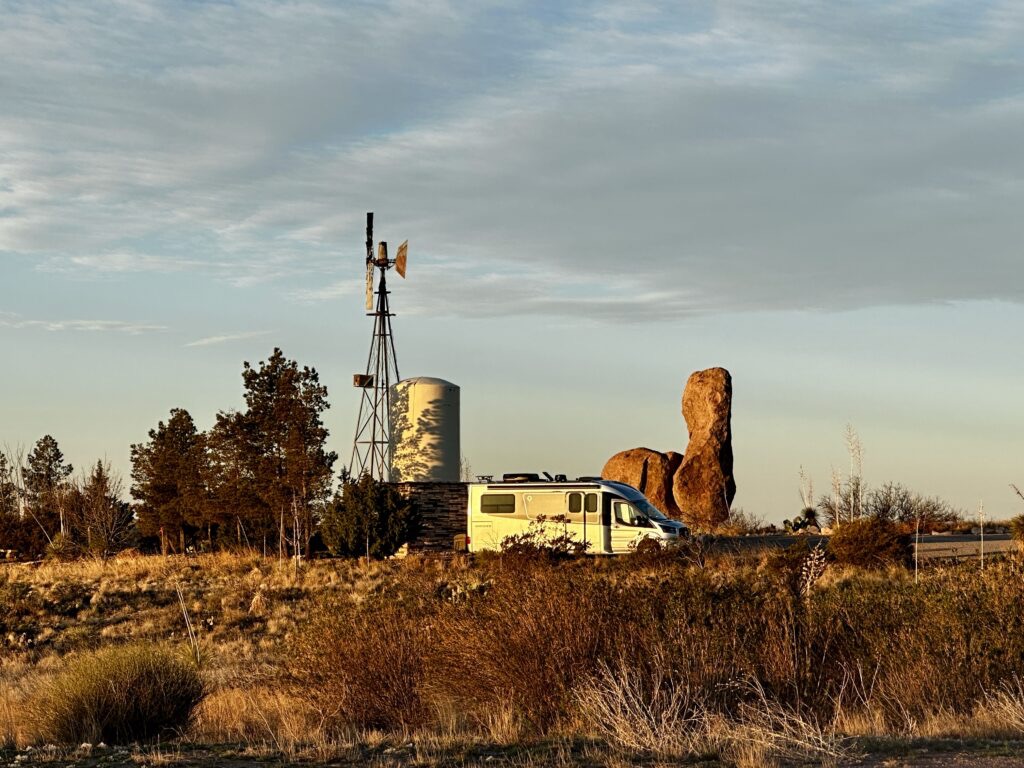
Camp Host
Because we are currently the only volunteers at the park, we are not functioning as true camp hosts, as most people would understand the position. Camp hosts are typically responsible for checking in campers, ensuring reservation status, maintaining the cleanliness of the campground, and reporting any concerns or maintenance needs to the ranger. These camp hosts are known to make their way around the park in the evenings and check in with each camper. Camp hosts reside in the park and are the 24-hour contact person.
Depending on the park and responsibilities, this more traditional camp host position may be compensated with a stipend and a campsite with utilities. With intentional money management, this arrangement could provide a path to full-time travel for those who are not yet retired.

Rex Hale Campground is in Wyoming, just outside of Yellowstone. Our camp host was wonderful. He was an older gentleman with a lifetime of stories. It was a pleasure talking with him. He had retired from years of camp hosting and lived in the local community. When the ranger did not have a volunteer for the season, he called and asked if he would consider un-retiring and take the position. Thankfully, he said yes, or we would not have been having that conversation, and most likely, this park would not have been open.

The North Fork of the Shoshone River flows beside the campground. I read that it is one of the top fly-fishing rivers in the Rocky Mountain area—a fringe benefit of camp hosting!

What If You Want to Volunteer
States typically have their own websites, and national parks use Volunteer.gov for their opportunities and applications. Many commercial campgrounds also hire seasonal employees who live and work in their parks. A wide variety of positions are available, from one-day clean-up events to full-time jobs, all with different arrangements for benefits and compensation. Many are just for volunteers.
Applying to become a volunteer is the same as applying for a job. We filled out applications and submitted resumes for positions we were interested in. We chose to include a cover letter to the hiring person. In our situation, we visited the park we were interested in and had the chance to meet the ranger. This is unnecessary; usually, all correspondence is e-mail and phone calls.
Like any application or job process, waiting can be frustrating, especially when you may be trying to finalize travel plans. Do not hesitate to call, e-mail, or follow up with the hiring person. Many of these rangers and hiring managers are doing a lot with very little and wear many hats. Volunteers help share the workload and ensure a positive visit or stay at parks across the country.
Live Simple, Live Happy.


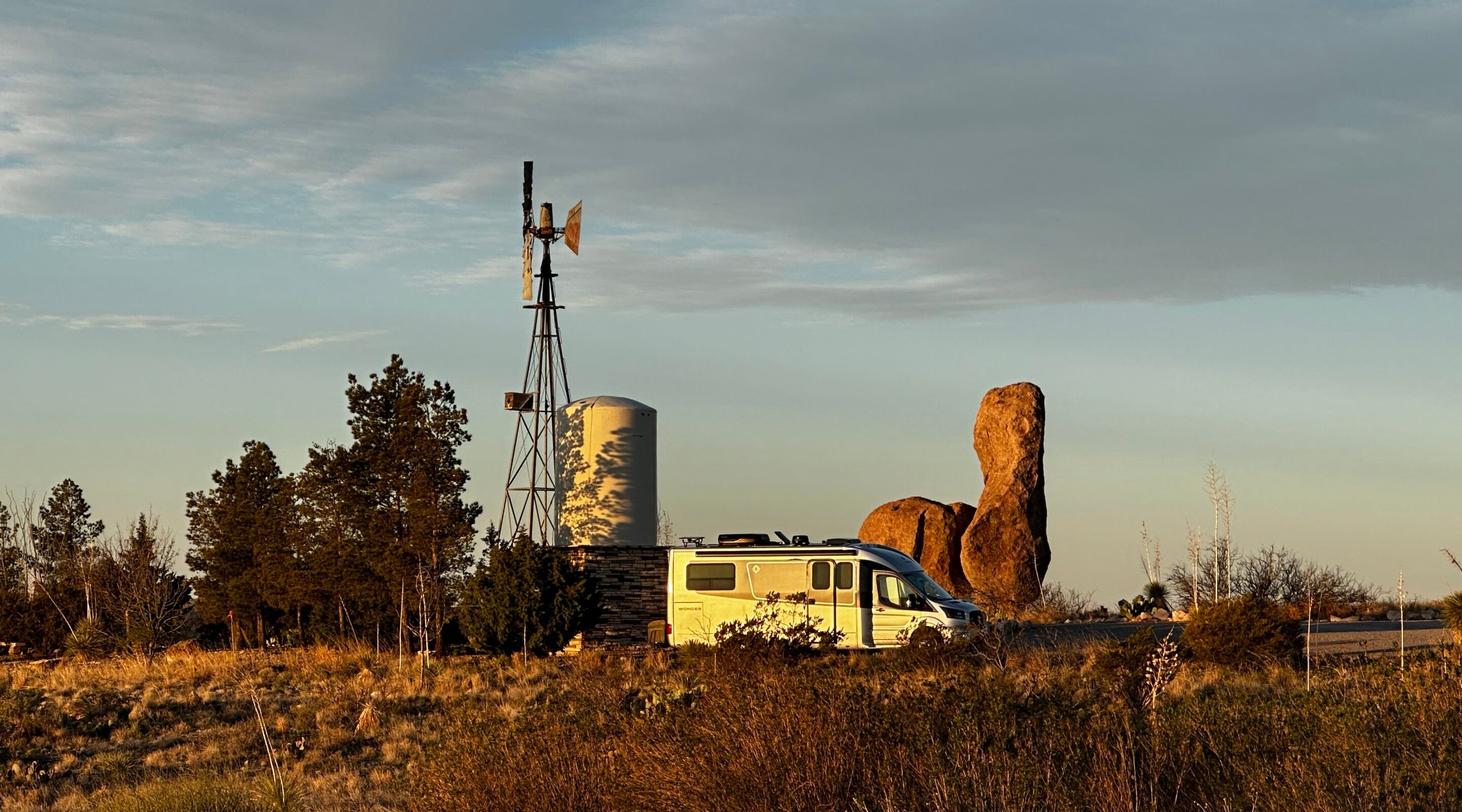
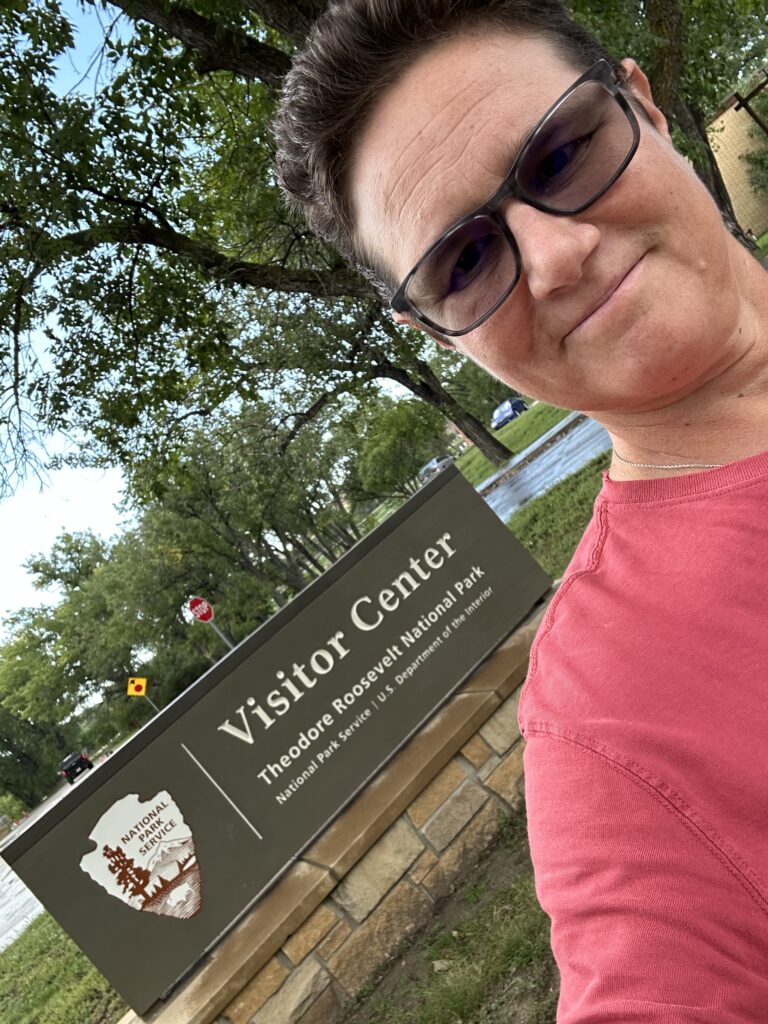
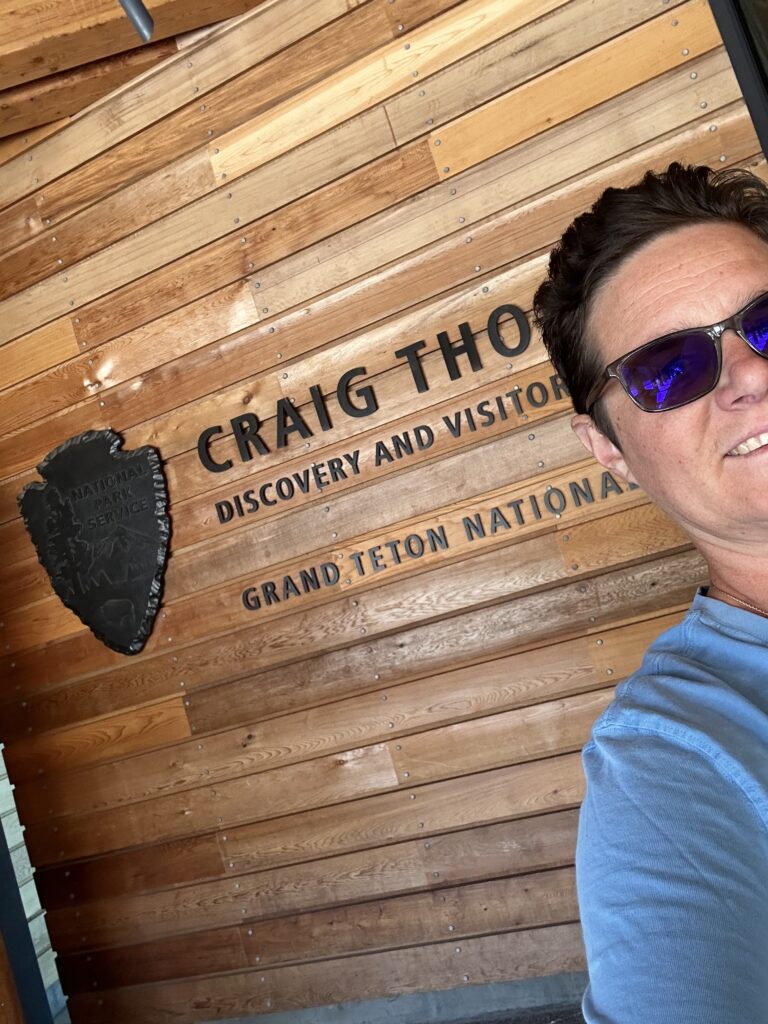


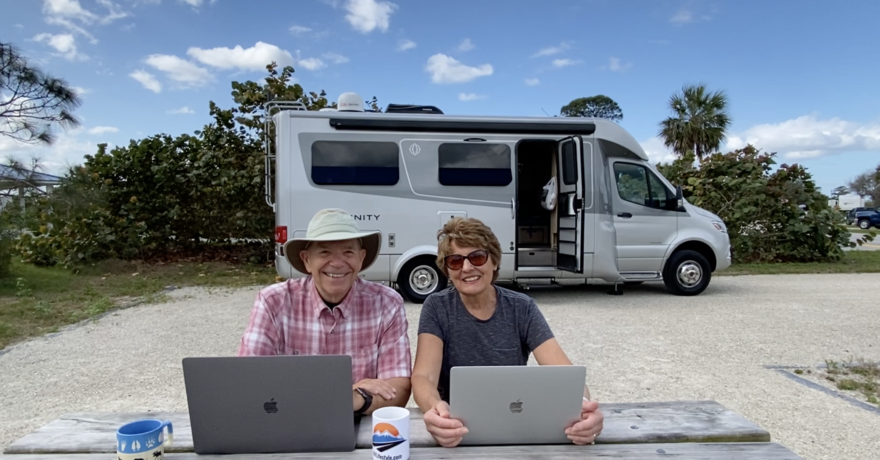
Comments